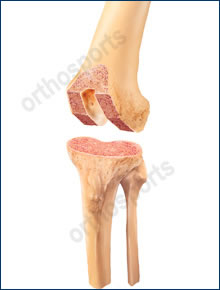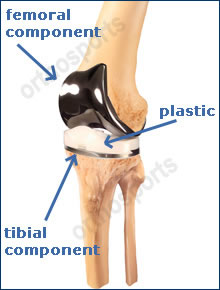Total Knee Replacement (TKR) Surgical Technique
The goal of knee replacement surgery is to give you back better function from your knee.
The anaesthetist will see you before the surgery. They will discuss with you the type of anaesthetic you will have. Typically a spinal anaesthetic is combined with sedation or a general anaesthetic. After you are taken to the operating theatre you will move on to the operating table and a tourniquet will be placed around your thigh. These days this is used for only a short period of time during the surgery.
A urinary catheter will be placed in your bladder to measure your fluid balance during and after surgery.
A cut is made in the skin on the front of the knee and through the underlying tissues to expose the knee joint.
Shaping the Distal Femoral Bone: Once the knee joint is entered, a special, customized knee instrumentation device is placed on the end of the femur. This device is used to make sure the bone is cut in the proper alignment to the leg’s original angles, even if the arthritis has made the patient bowlegged or knock-kneed. The custom device is used to cut several pieces of bone from the distal femur so the artificial knee can replace the worn surfaces with a metal surface.


- Trial components are put in first to make sure everything fits properly. The real components are then inserted.
- The polyethylene spacer is inserted and can be replaced later if it wears out (prolonging the lifespan of the artificial joint).
- Drains are sometimes inserted.
- The wound is carefully closed.
- A dressing is applied and you are taken to the recovery room.
- Your leg will be bandaged from the groin to the toes.
- Your fluid input and output is measured carefully. A drip in the arm will be used to give you fluid, replace blood during the operation and for antibiotics.
- Pain is normal after the operation but if your pain is not tolerable be sure to tell the nurse. Pain medication may be injected into a muscle or delivered through the drip into the blood stream.
- In some instances the anaesthetist will give you a device called Patient Controlled Analgesia (PCA) which allows you to control your own pain medication. When you push the button, pain medication is pumped into the drip. PCA pumps can provide a steady level of pain relief and have built in safety features which ensure you do not get too much medication.
- The drip, drains and catheter are removed at approximately 24 hours after surgery.
- Blood will be taken 24 to 48 hours after the operation to check your haemoglobin and blood chemicals.